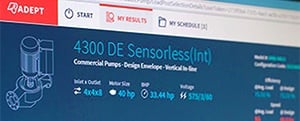What is the main cause of water hammer?
In commercial plumbing installations, which often incorporate large diameter pipework and pumped systems, water hammer can be a single destructive event that occurs when a pressure wave rapidly propagates through the pipework. The magnitude of the incident and the reflected pressure waves can sometimes exceed the rated operating pressures of components within the plumbing system. Surges can typically exceed 1.5 times the normal system operating pressure.
In a residential installation, Water hammer (or hydraulic shock) often occurs when there is a sudden change of direction or velocity of the water. When a rapidly closed valve suddenly stops water flowing in a pipeline, pressure energy is transferred to the valve and pipe wall. Shock waves are set up within the system. Pressure waves travel backward until encountering the next solid obstacle, then forward, then back again. The pressure wave’s velocity is equal to the speed of the sound; therefore it ‘bangs’ as it travels back and forth, until dissipated by friction losses.
Is water hammer a serious problem? The Effects of Water Hammer
Water hammer can damage the pipe connections and joints, resulting in leaks and costly maintenance. Ignoring water hammer can result in damage to pipework. The long-term effects of water hammer might include building systems downtime and interruptions in occupancy.
How does air get trapped in the piping?
There are three common ways that air can enter a liquid piping system.
The majority of air enters a system during the draining and filling of the lines. Any time liquid is removed from a piping system, air will fill the vacant space and pockets of air will remain in the line even after the system is refilled.
Air can also find its way in through fittings, seals, pipe threads, O-rings and bearings. This typically happens where vacuum conditions occur, such as the suction side of a pump.
The third source of air entry is within the fluid itself. More than 2% of the total volume of standard municipal water is dissolved air. This is similar to the dissolved carbon dioxide found in carbonated beverages.
These air pockets can wreak havoc on the efficiency and safety of a piping system. In addition to increasing power consumption, these transient air pockets lead to a multitude of issues, ranging from erratic control valve operation to water hammer and pipeline corrosion, thereby damaging or destroying a piping system.
How do you solve water hammer? Overcoming Entrapped Air Issues
Entrained air can be controlled by pressure relief valves, which are set to open with excess pressure in the line and then closed when pressure drops. Relief valves are commonly used in pump stations to control pressure surges and to protect the pump station. These valves can be an effective method of controlling transients.
The simplest of these valves are air/vacuum valves, also known as air release valves. These valves feature an internal float that automatically drops open as fluid is draining and seals shut once the liquid level rises. This process allows the valve to expel large amounts of air as the system is filling during startup.
Automatic degassing valves also use an internal float, but have a much smaller venting orifice. As air bubbles collect inside the valve, water is displaced, the float drops and the air is seamlessly vented out of the system. This is particularly useful with sodium hypochlorite and other solutions prone to outgassing.
The third option for eliminating air and gas is the “combination” air release and degassing valve, designed to reduce installation and maintenance costs. These combination valves contain the best of both worlds in one unit. They are best installed at high points in the system to provide air release during filling, continuous degassing during normal pressurized operations and vacuum protection while draining.
Air-Relief Valves
Air-relief valves, placed at high points throughout a pipework system, allow entrapped air to escape. In scenarios where a system is spread across a large flat area, air-relief valves should be placed early in the system, middle of the system, around pumps and downstream.
Air Chambers
Air chambers are also an effective solution to water hammer. These systems consist of a short segment of pipe with an empty/air filled chamber that cushions shock waves. This reduces the size of the shock waves downstream of the valve.
Water Hammer Arrestors
Water hammer arrestors operate similarly to air chambers. However, instead of a vertical pipe that absorbs pressure, water hammer arrestors use a mixture of springs and air bladders to absorb water movement and reduce shock waves downstream of quick closing valves.
Vortex Air Separators
In commercial systems Vortex Air Separators create a vortex or whirlpool action, sending the heavier air-free water to the outer portion of the tank, and allowing the lighter air-entrained water mixture to move into the lower-velocity center. At the center of the vortex the air is released from the water, forms bubbles and exits through an air vent or compression tank installed above it. More info is available here.
We recently hosted an insightful webinar on Boosters. If you missed the live session, you can access the replay here.
For more information on 6800 boosters, check out our Vertical Multistage Boosters Product Page.
For additional details, please refer to our blog post here.
Rogers Mount Pleasant Retrofit case study highlights how Water Hammer problem was addressed, and the remarkable outcomes achieved. For a detailed analysis of this compelling case study, check out the full report here.
Sources for this article:
https://www.hawkins.biz/insight/what-is-water-hammer-and-what-causes-it/
https://www.oatey.com/resources/project-guides/how-install-hammer-arrestors
https://www.measuremonitorcontrol.com/resources/water-hammer-causes-and-solutions



